Odoo 18 CRM provides an intuitive and efficient platform to manage your sales opportunities from start to finish. With its visual pipeline view, drag-and-drop functionality, and fully customizable sales stages, teams can easily track progress and adapt workflows to their needs. Opportunities marked as lost can be archived automatically or manually, keeping the pipeline clean and focused. The module also makes it simple to plan meetings directly from opportunities and schedule follow-up actions tied to important tasks. Designed for flexibility and ease of use, Odoo 18 CRM is an excellent solution for businesses looking to strengthen customer relationships and optimize their sales process.
It helps nurture leads, track opportunities, set product or service reminders, and record reasons for lost deals. It also streamlines event planning and meeting scheduling to strengthen customer relationships.
Configuring Lost Reasons
While working on opportunities, some may not result in a successful conversion. In Odoo 18 CRM, you can record the reasons for lost deals and use this data to plan strategies for winning them back in the future. The list of lost reasons can be accessed by going to Configuration > Pipeline > Lost Reasons.
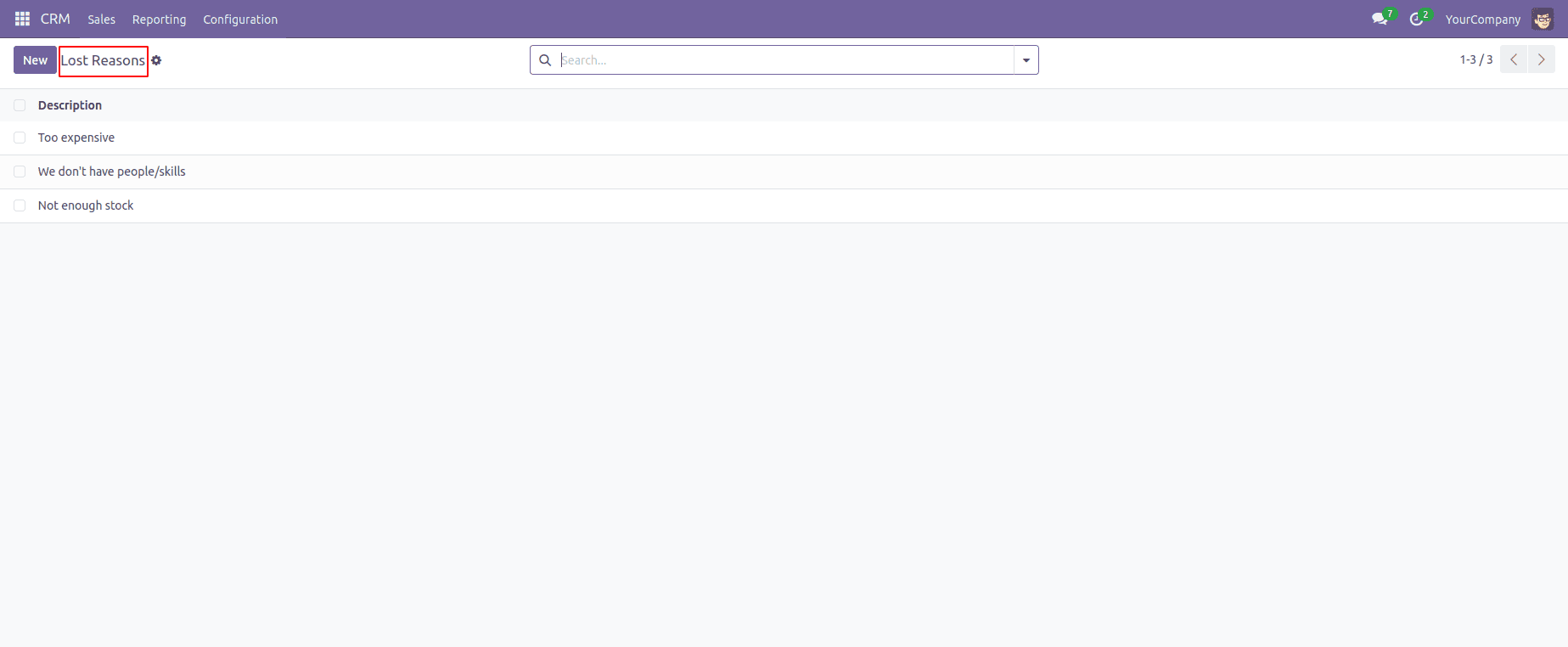
The Lost Reasons window displays a dashboard of all previously recorded reasons. Through the Lost Reasons action menu, you can export or import records, add them to dashboards, download the data as a spreadsheet, or generate reports.
The search bar now includes integrated filter and grouping options, giving the interface a cleaner and more organized look. To create a new lost reason, click New to open an editable line, enter the reason, and save it using the Save button for future reference.
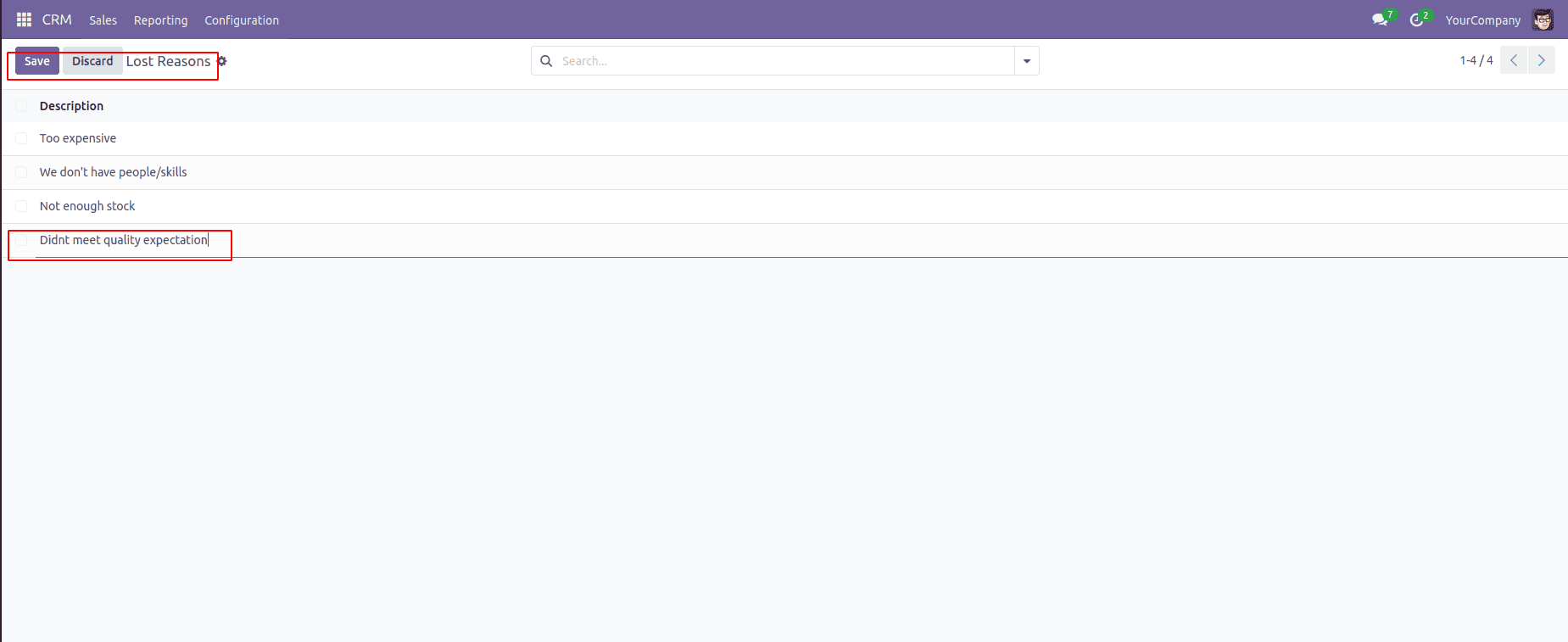
Declaring a Pipeline as a Lost Opportunity
All existing opportunities can be viewed from the My Pipeline dashboard in the Sales menu.
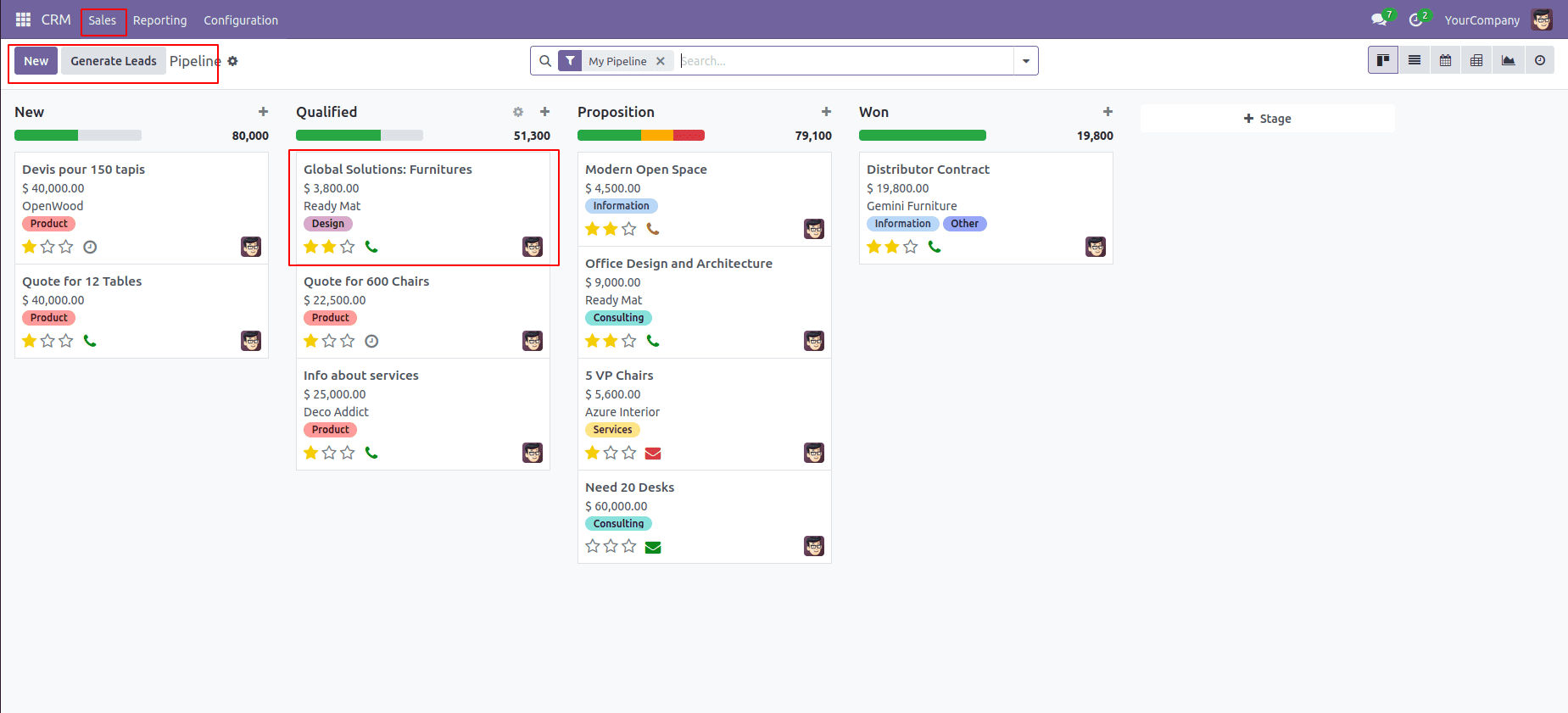
In the Kanban view, each card provides a quick snapshot of an opportunity, including details such as name, email, contact information, expected revenue, and priority. New opportunities can be added using the “+” icon next to each stage title.
When viewing an opportunity’s form, the Pipeline section displays key details like email, tags, salesperson, and expected closing date. To mark it as lost, simply click the Lost button.
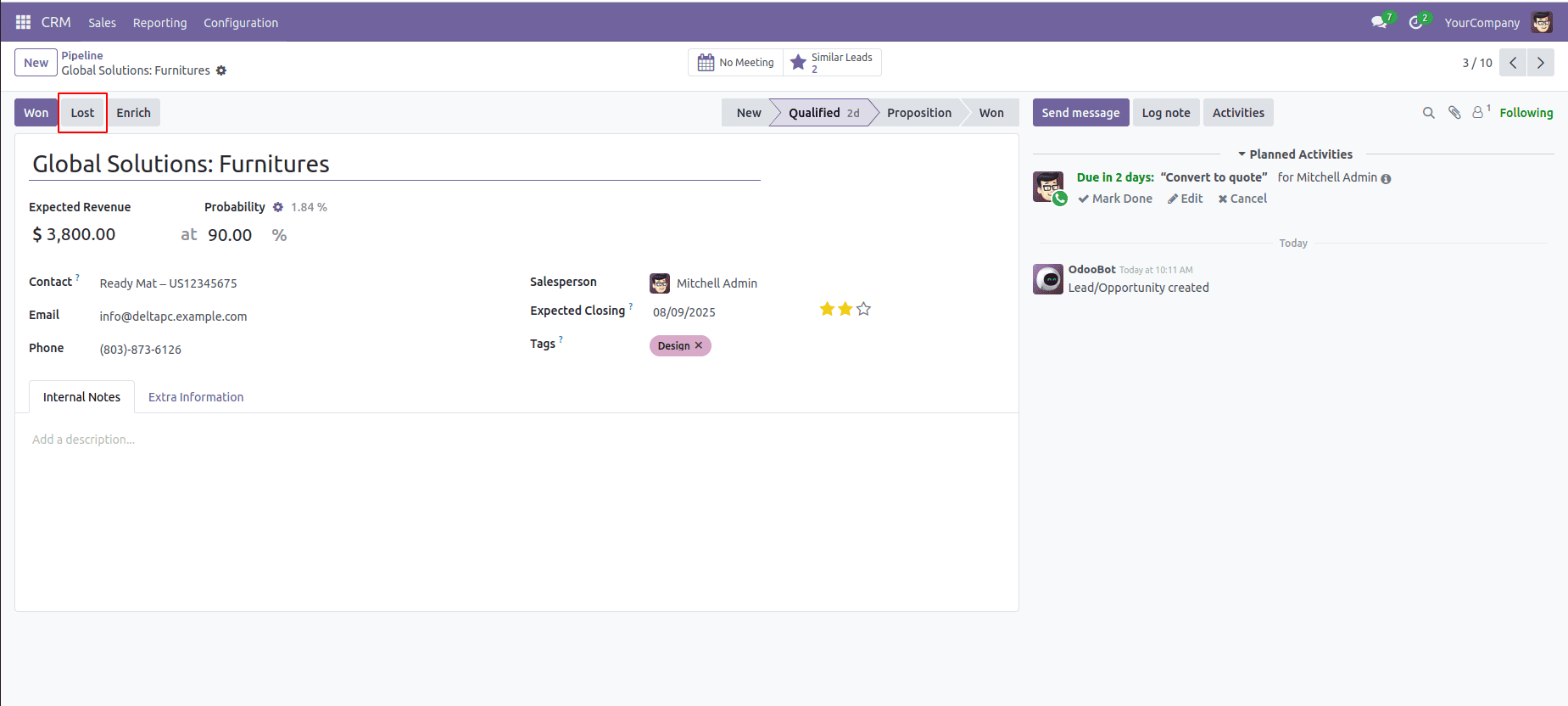
Clicking the Lost button opens a dialog box where you can enter the reason for the loss and add any closing notes in the provided fields.
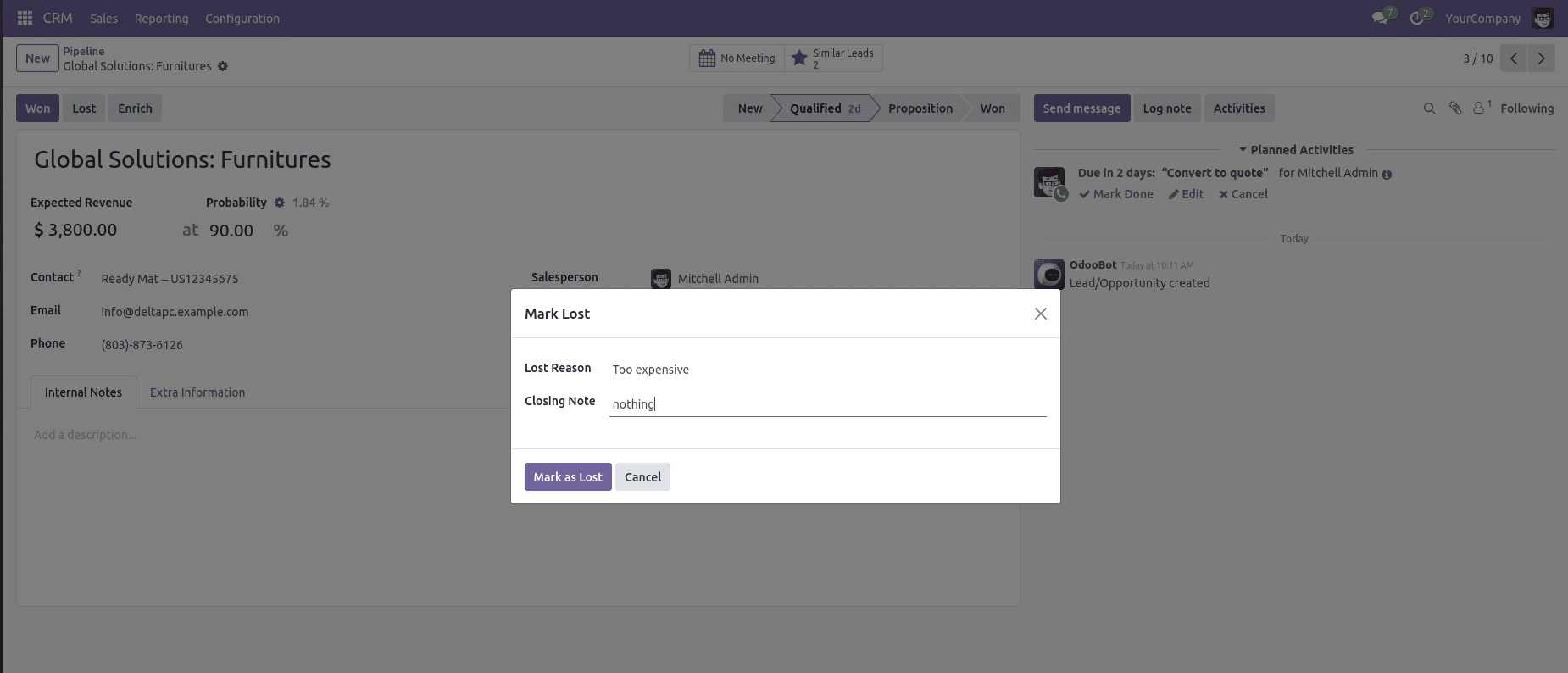
Once confirmed, click Mark as Lost. The opportunity’s form view will then display a red ribbon labeled Lost.
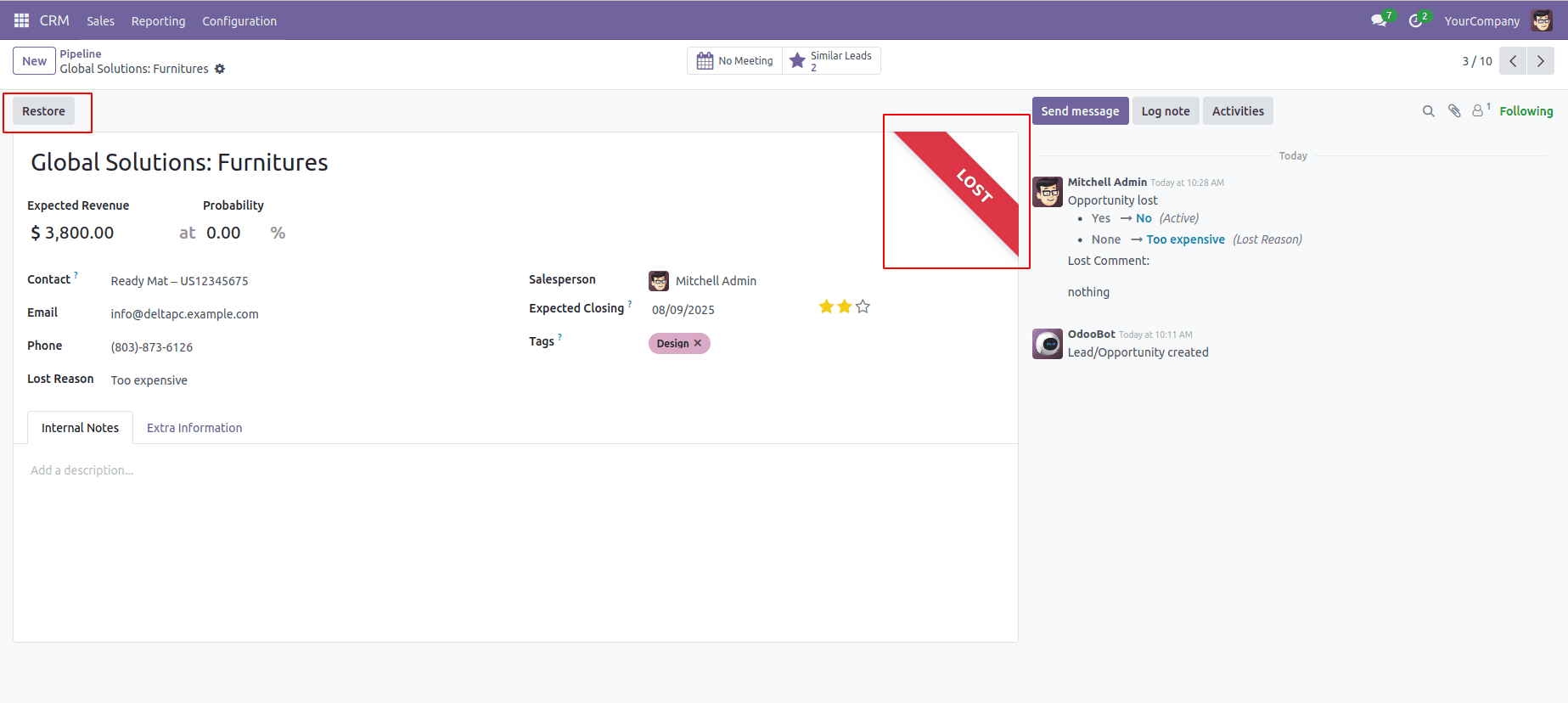
To recover a lost opportunity, click the Restore button located in the upper-left corner of the form view. The opportunity will be reinstated instantly, allowing you to continue working on it.
Scheduling an Activity and Restoring a Lost Opportunity
Another way to recover a lost opportunity is by scheduling a meeting with the customer and following up through calls, emails, or messages after the decision-making process. This can be managed from the Kanban view of the opportunity within the Pipeline window.
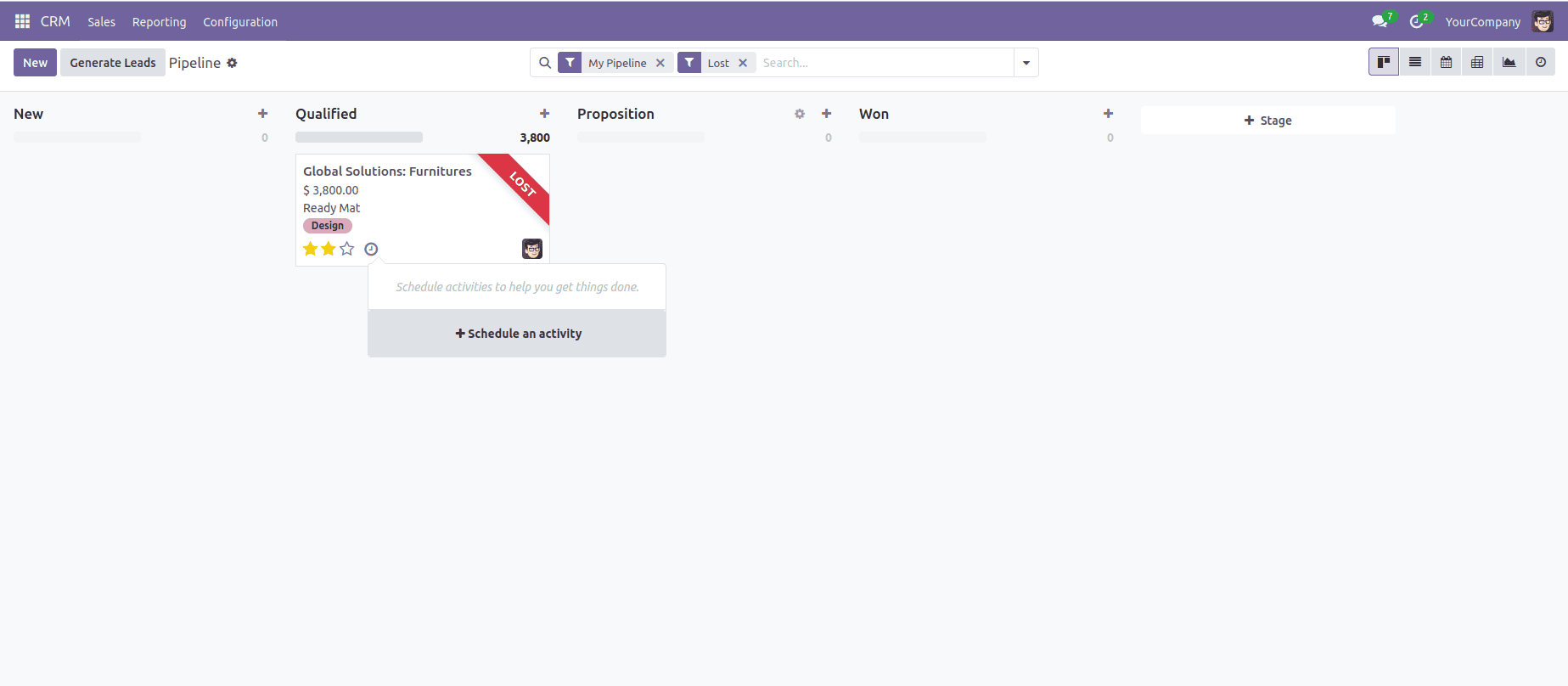
To plan an activity, click the Activity icon. Then, select + Schedule an Activity to open the activity configuration form, where you can set up and customize the details of the new activity.
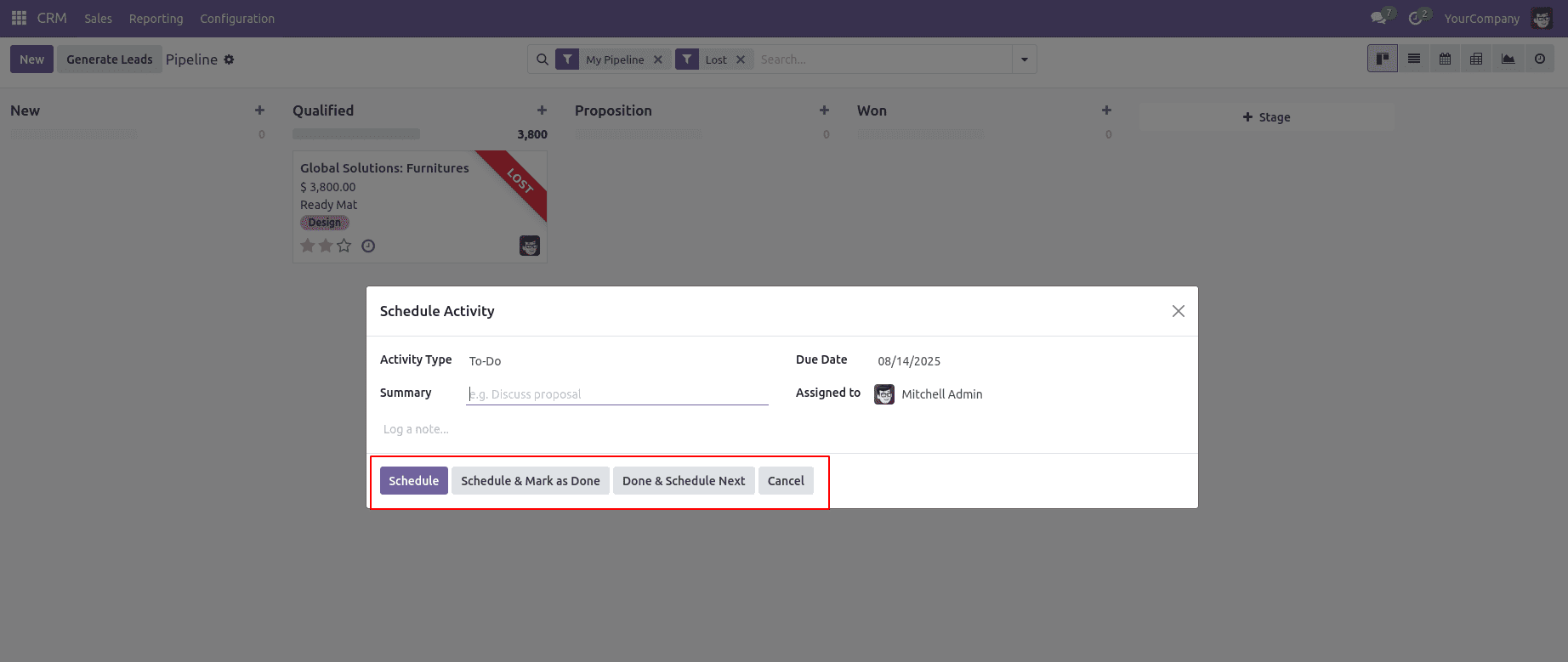
In the Schedule Activity window, select an Activity Type and enter a brief description in the Summary field. Then, assign it to a user, set a due date, and click Schedule to confirm.
Once an activity is completed, click the checkmark next to it in the planned activities list to mark it as done.
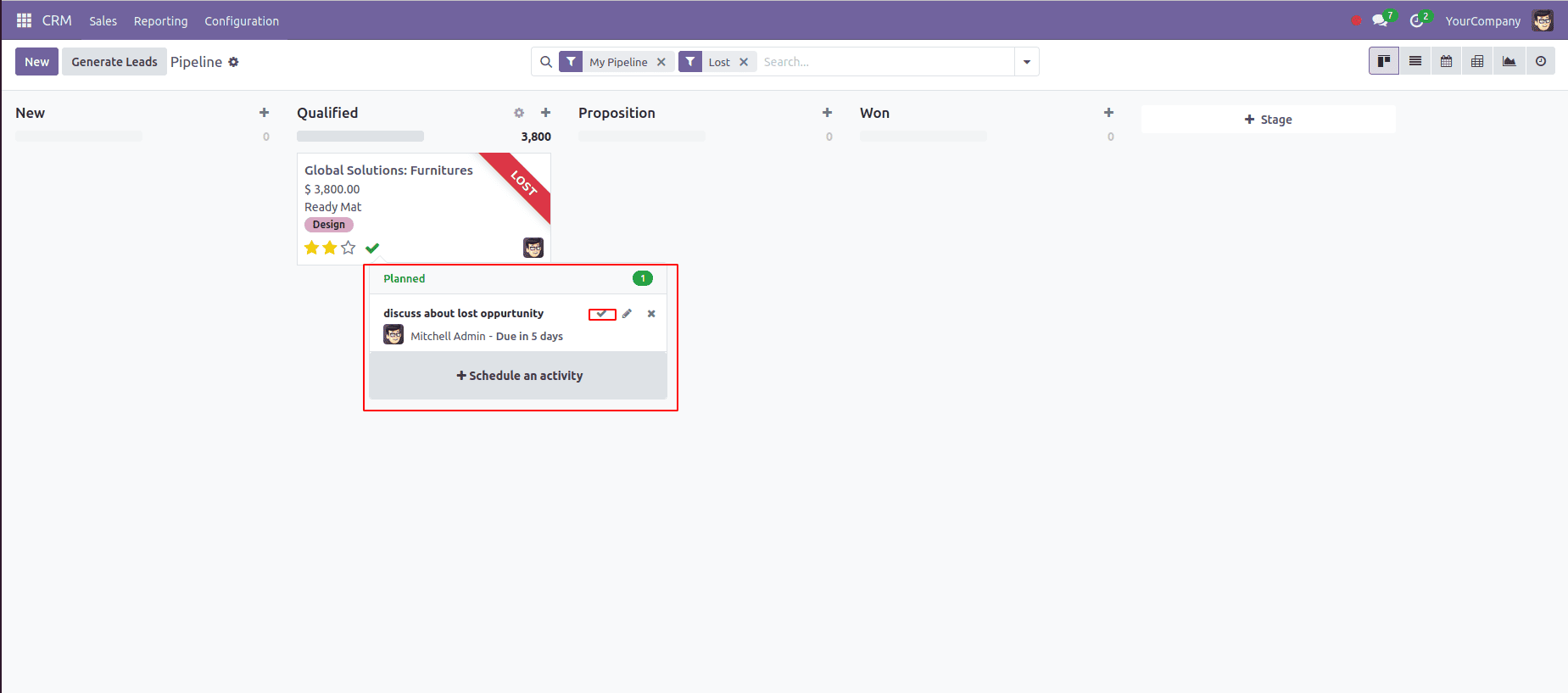
From the opportunity’s form view, click the Action button and select Unarchive to restore the lost opportunity. You can confirm its recovery by checking the Kanban view.
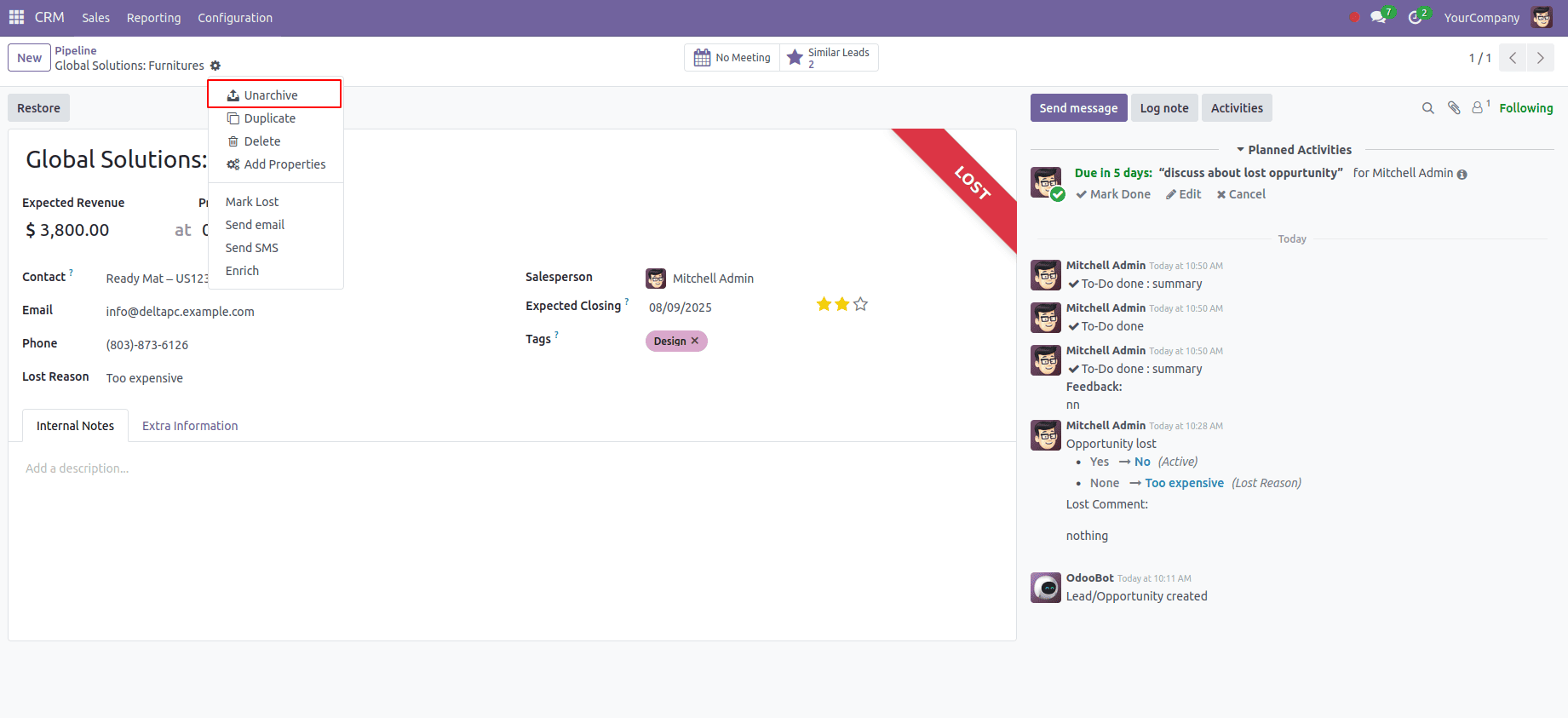
This process in Odoo 18 CRM makes it easy to manage lost reasons, schedule activities, track pipelines, quickly recover lost opportunities, and strengthen customer relationships.
To read more about How to Configure the Lost Reason in Odoo 17 CRM, refer to our blog How to Configure the Lost Reason in Odoo 17 CRM.